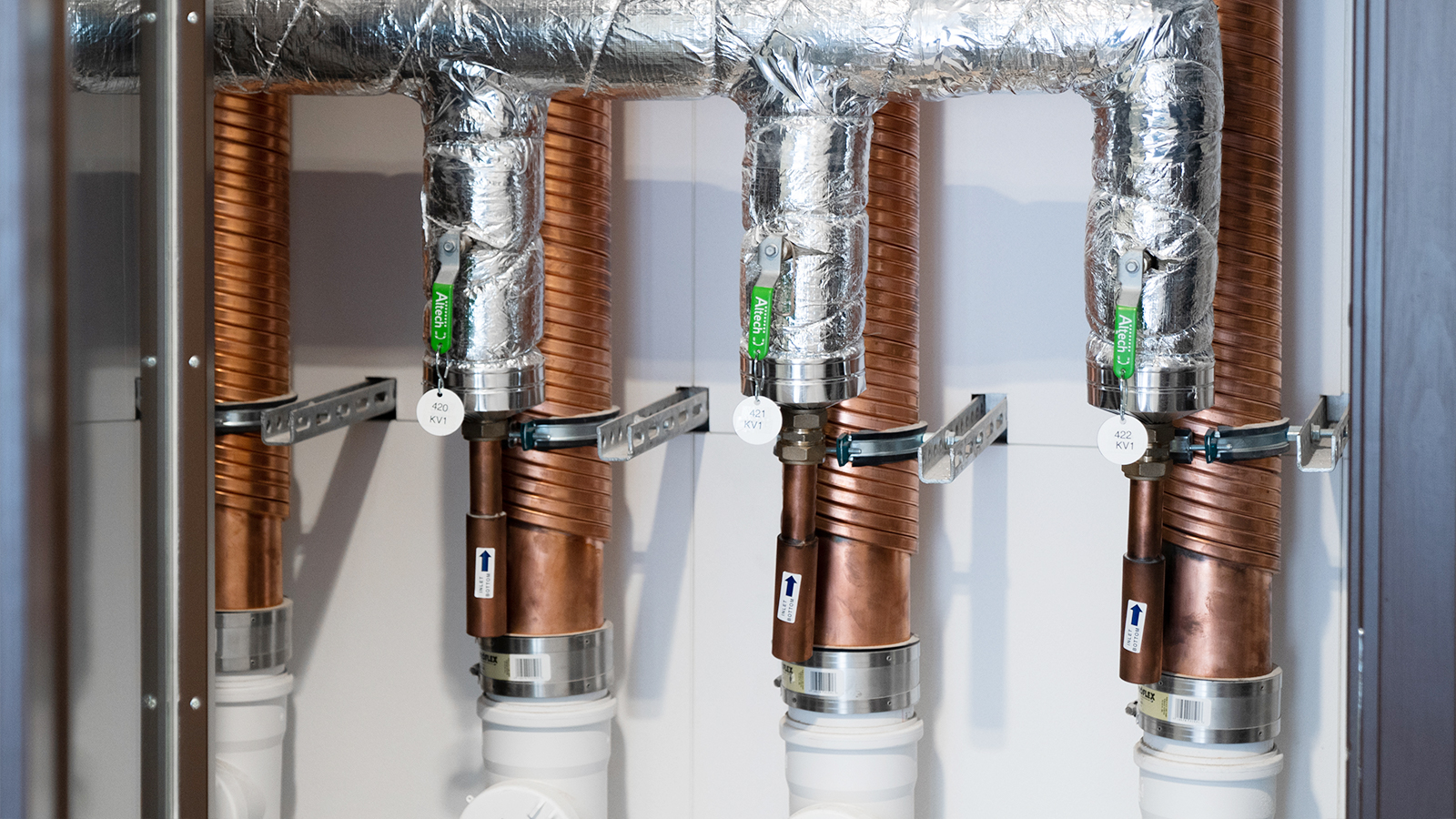Ensuring sustainability and equality of water and energy systems during actor-driven disruptive innovation – SEQWENS
Combining evaluation of state of art of heat and water recovery in properties with actor analysis and system assessment, the projects long-term aim is to ensure a safe transition toward a low-carbon society, with focus on water, heat and housing, such that we avoid large-scale disruption of these critical services and unintended effects of social injustice.

Background
A transformative shift in water and energy toward a low-carbon and resource efficient society is necessary for achieving the global sustainability agenda. Transformation of macro-scale infrastructures has already started, through for example, increased number of on-property installations for solar power generation. A new logic emerges within large-scale energy systems, spurred by decreasing renewable energy prices, which has very recently resulted in dramatically changing economic realities. According to The Economist (Feb 2017) it’s the ”World turned upside down” in energy markets world-wide, with utilities owning large assets finding themselves with a dwindling customer base. (World Energy Outlook 2017)
In Sweden we are likely to see another transition in the near future brought about by innovation in construction technology, IoT and on-property technology for energy and water. The aim of the Swedish government agency Boverket is that from 2021, all new houses shall have ”near zero” energy need for heating, or roughly below 85 kWh per m2 and year.
One area where great leaps have been done in recent years is reclaiming heat from sewage water within the property itself. Through a heat exchanger energy is fed back into the building thus reducing the need for energy e.g. from the district heating systems. New research gradually discloses the potential benefits and challenges encountered in heat reclamation from wastewater (KTH projects; HÅVA project). In addition, among large-scale consumers of water and heat, such as hotels and rental housing corporations, there is now interest for re-use of grey water within the property (e.g HSB Living Lab, KTH Live-in Lab, H+ residential area in Helsingborg).
But the effects at meso- and city-wide system level of these micro-innovations are not well known. What makes sense from property owner perspective may have disruptive, negative, effects at the system level. There is less heat for the water treatment plant to extract and deliver to the district heating system. A lower temperature of the wastewater may affect the biological treatment processes. And how shall utilities that have relied on sales volumes deal with the need for local re-use and reduced sales? Can water and energy utilities in Sweden face a similar fate as video stores, record labels, libraries, and postal services corporations have before them?
Project description
Essentially, our aim is to understand how different corporate actors influence the transition process of regional water and energy systems in the Swedish urban setting, and how their individual strategies create aggregated effects at the system level. This calls for a combined knowledge-set from energy systems and infrastructure engineering, sociology and innovation studies, as well as business management.
We combine evaluation of state of art of heat and water recovery in properties (from three case studies) with actor analysis and system assessment. Throughout we have a close interaction with key sector actors, for validation and outreach, through a reference group with wide participation from water, energy and building industries.
The long-term aim of this project is to ensure a safe transition toward a low-carbon society, with focus on water, heat and housing, such that we avoid large-scale disruption of these critical services and unintended effects of social injustice.
Our objectives are that by 2021:
i. The scope for on-property installations for water and heat recirculation in large urban areas in Sweden has been assessed;
ii. The varying incentives, business models and strategies of the different actors in urban water and heat systems are well understood;
iii. The potential effects at system (city-scale) level of on-property technology has been evaluated for one major urban area in Sweden, including risk for business model disruption, social inequality and climate effect;
iv. There is an ongoing and informed dialogue between policy-makers, infrastructure-owners, and real estate developers and managers, to develop coherent strategies for the safe, equitable and sustainable transformation of urban water and heat systems.
Implementation
First we explore and assess the state of the art in on-property water and energy reclamation through three case studies focusing on actors at meso-level and their strategies (water and energy utilities, property developers and large customers).
Second, we build a system model of water and energy in Stockholm region to describe and assess the related system effects in a large urban Swedish city region.
Third, we evaluate future scenarios, using the model to analyse the outcome for the various actors and assess possible system disruptions and social inequalities.
Fourth, we initiate public-private dialogues on how to manage the societal transition process in the interest of all.
Update
Follow David Nilsson´s blog about this project here WaterBlog@KTH: Reflect, Rethink, Refill .
